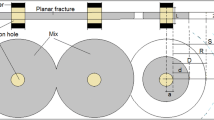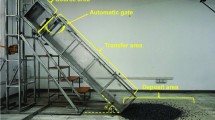Abstract.
The thermofluid dynamics of pyroclastic flows down the slopes of Vesuvius (Italy) were investigated using physical modeling of the magma ascent and pyroclastic dispersal processes. The expected properties and conditions of the magma, such as its anhydrous composition, water content, and temperature, were based on the present knowledge of the magmatic system and were used as input data for the magma ascent model. The predicted vent conditions were used to define the boundary conditions for the simulation of pyroclastic flow dispersal along selected two-dimensional axisymmetric profiles, representative of the southern and northern slopes of Vesuvius. The model employed describes the temporal evolution of a three-phase mixture composed of a continuous gas phase and two solid phases representative of fine and coarse particles. The specific terrain roughness of the slopes of Vesuvius, caused by the presence of pine woods and urban settlements, was also estimated and accounted for by the model. Several simulations were carried out by assuming different magmatic compositions (in terms of water content and temperature), eruption intensities, topographic profiles, and flow duration. Pyroclastic flow dynamics appear to be strongly influenced by the fountain and atmospheric dynamics showing complex, unsteady, and, in some cases, non-intuitive behaviors. The mass flow-rate per unit angle of propagation of the flow proves to be the most critical parameter controlling the run-out and, therefore, the hazard on the slopes of Vesuvius. The two-dimensional topographic profiles employed also appear to significantly affect the flow propagation. Simulation outputs allow the quantification of the spatial and temporal evolution of several flow variables that are critical in hazard mitigation studies. The analysis of these variables is extensively described in a companion paper (Esposti Ongaro et al. 2002, this volume).
Similar content being viewed by others
Author information
Authors and Affiliations
Additional information
Electronic Publication
Rights and permissions
About this article
Cite this article
Todesco, .M., Neri, .A., Esposti Ongaro, .T. et al. Pyroclastic flow hazard assessment at Vesuvius (Italy) by using numerical modeling. I. Large-scale dynamics. Bull Volcanol 64, 155–177 (2002). https://doi.org/10.1007/s00445-001-0189-7
Received:
Accepted:
Issue Date:
DOI: https://doi.org/10.1007/s00445-001-0189-7




